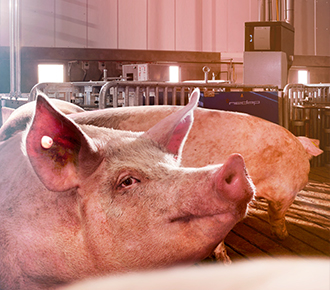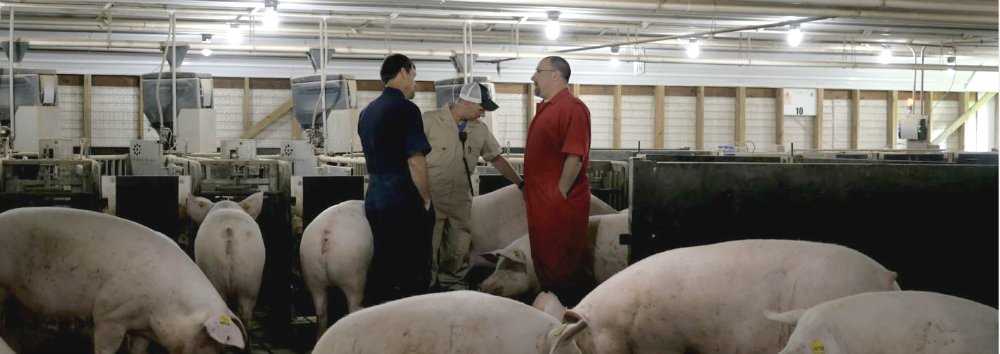Consider sows when remodeling swine facilities
Press release
Facility remodeling can create a healthy environment for sows.
Worn-out equipment is part of farming and can make a big dent in an operation’s productivity, but it could be a good problem to have. These days, the options available to update a swine facility can put a farm in a position to be productive for years to come.
“Interest is high in remodeling stalled barns and building new group barns,” said Brad Carson, vice president of Nedap Livestock Management, North America. “Management teams recognize the benefits of housing sows in groups and are eager to capitalize on those benefits sooner rather than later.”
No barn is the same. What works for one producer might not work for another, so choose experts to help develop a plan for the farm’s future. Consider these three areas to effectively remodel a facility’s system and make it easy to use:
1. Put the sow above all else.
When deciding to remodel a barn, think like a sow. What keeps her calm so she can be productive? Minimizing aggression, providing adequate resting areas and eliminating congestion at the feeder entrance are keys to peaceful, productive sows.
“The most important thing to consider when remodeling is the environment you want to create for your sows when the remodel is over,” Carson said. “When you choose a barn management system with your sows’ needs in mind, your sows will be productive.”
From the slat and pen configurations to the feeder design, each part of a barn plays a role in sow care and her success.
“We’ve seen many successful remodels in barns newer than 10 years and older than 20 years,” Carson said. “We’ve seen remodels work with fully or partially slatted floors. Your barn’s attributes might impact the process of your remodel, but you can work around those physical aspects. What you can’t work around are your sows’ needs.”
Sows can develop feed-guarding habits if given the chance, so carefully evaluate feeder designs. Can sows interrupt an individual while she eats, even when she is inside the feeder?
What about when she is done? A feeder designed with front exits encourages one-way traffic through pens to eliminate negative interaction. This type of design also prevents sows from returning to the entrance immediately after eating to guard the feeder or aggressively disrupt another sow trying to eat. Giving every sow the opportunity to eat without interruption will allow her to maximize productivity, Carson added.
In addition to reduced aggression, sows using forward-exiting feeders are more comfortable exiting both breeding stalls and farrowing stalls. The forward-exit motion is familiar, making exiting from the stalls easier on both the sows and the employees.
2. Each barn is unique, so do the sow math.
To meet square footage requirements in group pens, an operation might need to be flexible with its sow math. For example, a producer might need to change the total number of sows in a barn, or group sizes might need to be developed in a slightly different way in a new barn. To find the perfect fit, a producer should work with a team that has experience in all sizes and styles of group sow management, Nedap said.
“Don’t try to force something that works in someone’s new barn to work in your remodeled barn,” Carson said. “Whether you want to manage sows in static or dynamic groups, the right team can help you determine the right number of sows for your groups.”
3. Sow strategy during and after the remodel.
It’s possible for production to continue during the remodel. The first step is to adjust breeding targets to reduce sow inventory. This provides room to pull out stalls and begin building new pens. Another strategy is to find an alternative location to house sows during a remodel.
“Many producers who have remodeled repopulate their new pens with previously stalled sows that adjust quickly to their new environment,” Carson said. “The same sows that were easily excitable in stalls are calm and unafraid of people in their new pens.”
A producer certainly may choose to populate the new space with gilts not previously crated; however, sows have strong feed drives and are accustomed to eating enthusiastically when feed drops in front of them. Producers who are feeding formerly stalled sows in group pens say sows learn to use individual electronic feeding systems quickly because they have a strong feed drive and know what to do when feed drops.
Solutions
Discover how Nedap can help remodel your swine facility:


